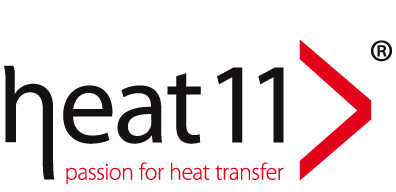IT is what makes many process innovations possible – also in plant engineering and construction. With a plant map developed specially for heat transfer plants, the Bielefeld plant engineering company heat 11 goes in completely new directions when creating its operating and maintenance manuals.
Companies of the plant engineering and construction have to establish mostly extensively documentations such as operating and maintenance manuals together with their products. Many set of rules have to be taken into account that can vary from order to order and from country to country. The requirements in terms of scope and quality of these documents are increasing continuously. Moreover, they have to be technically and linguistically accurate to prevent incorrect operations and to avoid damages resulting from it. An effective management of these documents proves thereby increasingly as a success factor.
Usually the creation of the plant documentation is a very work-intensive and time-consuming process which has often only a relatively little significance in the actual operating practice. The creation of the corresponding documents is mostly hardly standardized – it needs a lot of time and is therefore often not a favored task. The consequences in many cases are contractual penalties due to delayed delivery, delayed invoicing and not least annoyed customers.
Challenge efficient document creation
For these reasons it is necessary that not only the manufacturing of the equipment and plant but also the production of their documents is standardized and on an industrial scale designed as simple as possible and efficiently. A completely new direction took the plant engineering company heat 11. For the optimization of their documentation processes the Bielefeld process heat specialist looked around in the field of legal characterized, industrial document creation and took over corresponding methods and procedures from there. They were supported by re-eng, the student business consultancy of Hochschule Ostwestfalen/Lippe.
A find was made at the knowledge and process specialist knowledgeTools in Berlin which optimizes and automates primarily legal characterized business processes with the methodology and software developed by them. “We have adapted the methodology and the comprehensive know-how of knowledgeTools in the field of the industrial process and document management and transferred them to the requirements of the documentation in the plant engineering and construction.”, reports Stephan Kraus of heat 11. knowledgeTools with its methodology has revolutionized among others the documentation of medical test methods, the contract preparation as well as the lawsuit in legal proceedings or the preparation of federal laws.
Standardization and structure as key
The knowlegeTools method extends far beyond the classic document management: At knowledgeTools, not complete documents but their document components will be available in many individually, freely definable text sections and be made manageable in the respective application context. The linking of the document sections respectively text blocks is guided by rules with a visually detectable structure which reminds to a map. Due to this standardized construction, the method may be used to each equipment or plant – it is not limited to heat transfer plants.
For the plant engineering this method is excellently suitable since the basic construction of operating and maintenance manuals is virtually always identical, independently from the type of equipment or plant. The reason for this lies in the legal and functional requirements to the construction of the documentation. For example, the documentation for heat transfer plants is to be structured as per DIN EN 746-6: 2004. The operating manuals of the customer-specific plants differ only by the substantive details of the chapters which are adjusted depending on the constructed plant or equipment.
Visualization creates additional value
With a plant map developed specially for heat transfer plants, the project engineers at heat 11 can identify quickly and safely the relevant information and provide them in a customer-specific document. They can work independently of time and location and avoid data redundancies and the working with out-of-date revisions. But also the efficiency has increased significantly: “We reduced the times for the preparation of operating and maintenance manuals by 80 % – whilst improving the quality!”, points out project manager Benedikt Goedde on the successes with the new system.
Further details regarding the system of the documentation creation by means of plant map offers a White Paper published by heat 11 in cooperation with re-eng (Hochschule Ostwestfalen-Lippe) that can be downloaded from out media center.





Comments are closed.